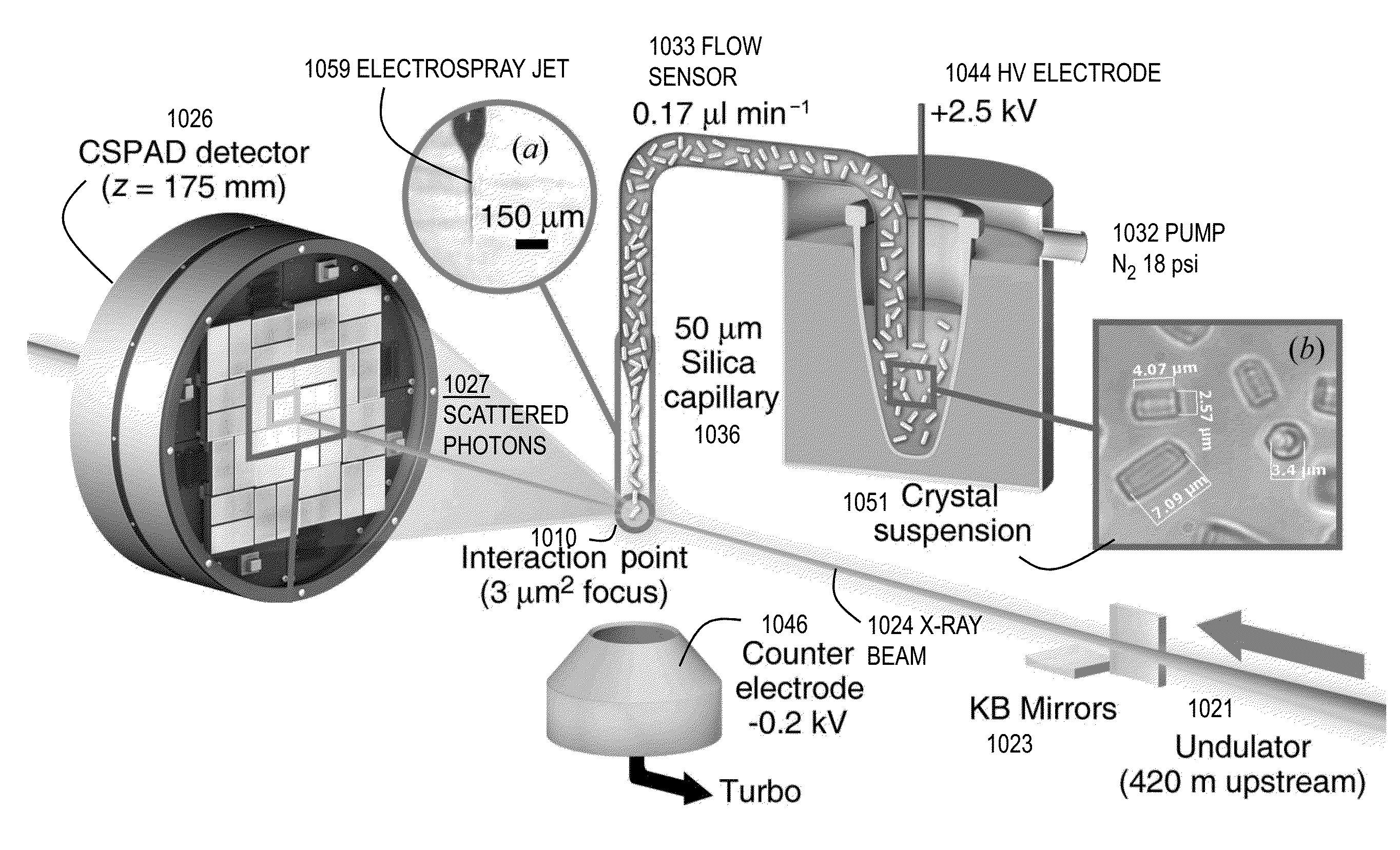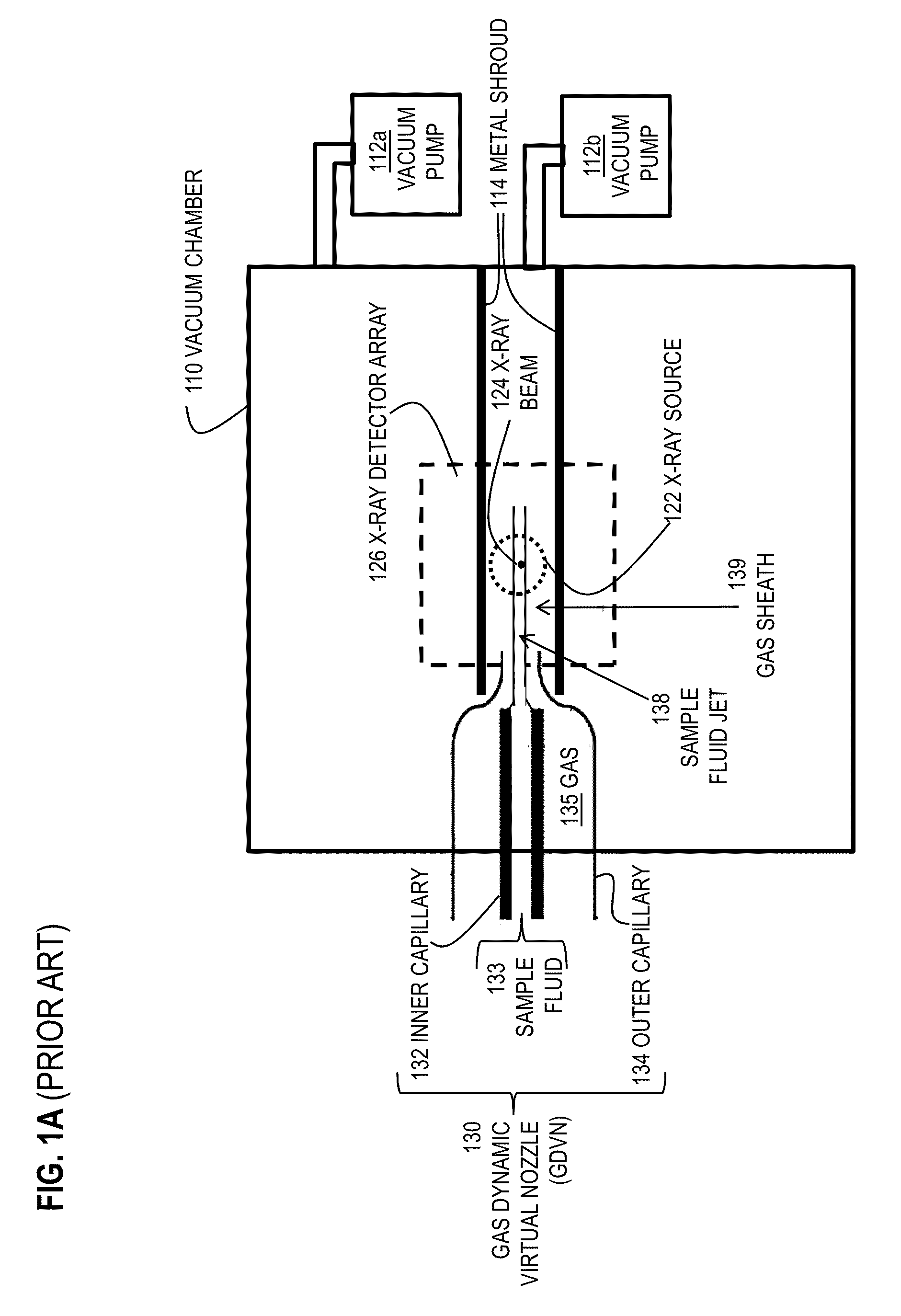Apparatus and method for nanoflow liquid jet and serial femtosecond x-ray protein crystallography
a nanoflow liquid jet and protein crystallography technology, applied in the direction of instruments, packaging goods, particle separator tube details, etc., can solve the problems of increasing high sample consumption rate, and sample settling reducing data collection rates, so as to increase the likelihood of clogging, reduce data collection rates, and high sample consumption rate
- Summary
- Abstract
- Description
- Claims
- Application Information
AI Technical Summary
Benefits of technology
Problems solved by technology
Method used
Image
Examples
Embodiment Construction
[0001]This invention was made with Government support under contract DE-AC02-76SF00515 awarded by the Department of Energy. The Government has certain rights in the invention.
BACKGROUND OF THE INVENTION
[0002]Serial femtosecond (fs, 10−15 seconds) crystallography (SFX) using X-ray Free-Electron laser (XFEL) radiation is an emerging method for three dimensional (3D) structure determination that extracts structural information from nanometer (nm, 10−9 meters) to micron (micrometer, μm, 10−6 meters) sized crystals. This method relies upon intense X-ray pulses that are sufficiently short to pass through the sample before the onset of significant radiation damage (diffraction-before-destruction). SFX therefore promises to break the correlation between sample size, damage and resolution in structural biology. In this approach, a liquid microjet is used to introduce randomly oriented crystals into the XFEL beam. Structures with less than 2 Ángström (Å, 1 Å=10−10 meters) resolution have been...
PUM
| Property | Measurement | Unit |
|---|---|---|
| viscosity | aaaaa | aaaaa |
| diameter | aaaaa | aaaaa |
| diameter | aaaaa | aaaaa |
Abstract
Description
Claims
Application Information
 Login to View More
Login to View More - R&D
- Intellectual Property
- Life Sciences
- Materials
- Tech Scout
- Unparalleled Data Quality
- Higher Quality Content
- 60% Fewer Hallucinations
Browse by: Latest US Patents, China's latest patents, Technical Efficacy Thesaurus, Application Domain, Technology Topic, Popular Technical Reports.
© 2025 PatSnap. All rights reserved.Legal|Privacy policy|Modern Slavery Act Transparency Statement|Sitemap|About US| Contact US: help@patsnap.com



